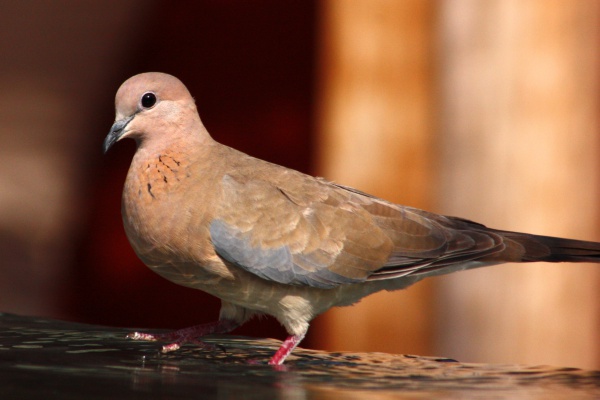Facts About Laughing dove
The laughing dove is a small pigeon native to Africa, the Middle East, and the Indian Subcontinent. You’ll often find it in arid scrublands and semi-desert areas, foraging for food on the ground. One of its distinctive features is a rufous and black chequered necklace, and its recognizable call makes it easy to identify. In India, it is known by various names, including the laughing turtle dove, palm dove, Senegal dove, and little brown dove. Intriguingly, this bird has even established itself in Western Australia, where it has adapted to the wild.
Initially, scientists classified the laughing dove in the genus *Streptopelia*, but later reassigned it to the genus *Spilopelia* to group it with related species. There are five known subspecies, each exhibiting slight variations in size and plumage depending on their region. The laughing dove is a slender, long-tailed pigeon with pinkish-brown underparts, a lilac-tinged head, and that distinctive chequered neck. Its call is often described as a low, rolling “croo-doo-doo-doo-doo" reminiscent of chuckling.
This bird is widespread, inhabiting Sub-Saharan Africa, the Middle East, and parts of Asia. It favors scrublands, dry farmlands, and even areas near human settlements. Although primarily sedentary, laughing doves might exhibit some movement within their range. Their diet consists mainly of fallen seeds, bits of plants, and small ground insects. During the breeding season, they engage in courtship displays and build flimsy nests out of twigs, often reusing the same nest to raise multiple broods.
Laughing doves face several threats, including predators such as the Southern grey shrike, lizard buzzard, and Eurasian sparrowhawk. They are also susceptible to parasites and diseases, including bird lice and *Trypanosoma hannae*. In South Africa, there have been reports of beak deformities among the population.

 Togo
Togo